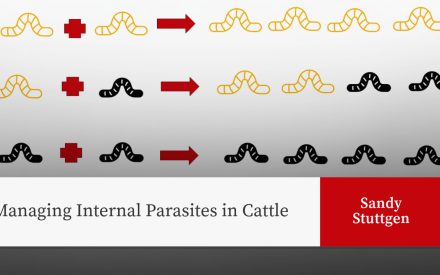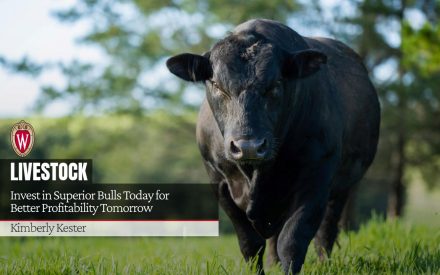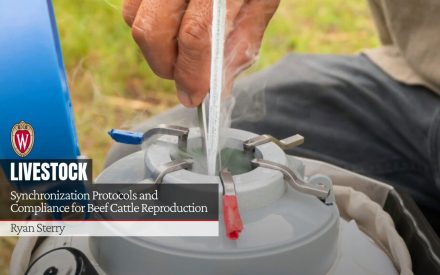This article was originally published in the Wisconsin Agriculturist
Deworming decisions are farm-specific and depend on the age of the animal, how much exposure they had to infective larvae while grazing this spring and summer or the previous spring and summer, when they were last dewormed, and what products were used. Anthelmintic (dewormer) resistance is common for all products, and how you use them contributes to the worms developing resistance.
Answering these four questions with your veterinarian and nutritionist will help with your deworming decision:
1. Who should be dewormed? Don’t deworm every animal in the herd. The best return on deworming investment occurs in cattle under 4 years of age. Natural tolerance to internal parasites develops as the animal matures; the worm’s presence is less likely to harm an older animal’s production. However, bulls, regardless of age, are more susceptible to parasitism.
Along with decreasing cost, not exposing older female cattle to dewormers provides an anthelmintic-susceptible population of internal parasites known as refugia. Refugia pass along their susceptible genetics when mating with anthelmintic-resistant worms. Veterinary parasitologists conclude that maintaining refugia is the only way to slow the progression of anthelmintic resistance. The heaviest 2- and 3-year-old replacement females may also be used as a source of refugia by not deworming them. Performing fecal egg counts may help determine if deworming is warranted.
2. When should youngstock be dewormed? The answer to this question depends on their previous larval exposure from grazing and when the autumn dewormer is administered. Larvae can survive for months in pasture topsoil (up to 18 months for some species); therefore, from year to year, each farm needs to map its pastures and paddocks and potential worm populations. The metabolism of internal parasites slows as the temperature drops, during a process known as inhibition. Check the label and data sheets of the products you plan to use in late autumn as to their efficacy against inhibited larvae.
3. Where should youngstock be dewormed? Place dewormed youngstock onto a drylot or a pasture that has refugia present. As the dewormed youngstock graze, they will ingest refugia to mate with any internal worms that survived treatment, including inhibited or sexually active worms that are likely anthelmintic-resistant. Make sure both those dewormed on a drylot and on pasture are introduced onto pastures with refugia present the following spring so they may ingest anthelmintic-susceptible larvae.
4. What deworming product should I use? On one day, administer a macrocyclic-lactone (i.e., ivermectin, epinomectin, doramectin) and a benzimidazole (albendazole, fenbendazole) product. Combination treatment is recommended because using different modes of action simultaneously increases the killing success over using one product alone or switching products between treatments. Use each one as the label directs: at the correct dose for the correct weight of the animal. Use a fecal egg count reduction test to determine the efficacy of the dewormers used.
Your deworming decisions this autumn impact future deworming decisions. Maintaining refugia, using combination therapy, and monitoring fecal egg counts and fecal egg count reduction test results will help preserve future anthelmintic effectiveness on your farm. Gone are the days when you could simply administer one product without thinking about the product’s effectiveness and its contribution to increasing worm resistance.

 Thanks for Your Deworming Management
Thanks for Your Deworming Management Managing Internal Parasites in Cattle
Managing Internal Parasites in Cattle Invest in Superior Bulls Today for Better Profitability Tomorrow
Invest in Superior Bulls Today for Better Profitability Tomorrow Synchronization Protocols and Compliance for Beef Cattle Reproduction
Synchronization Protocols and Compliance for Beef Cattle Reproduction


